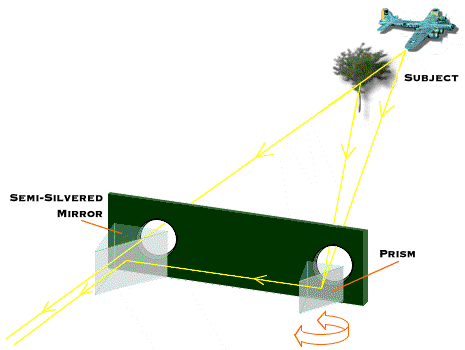The formula for the range is the tangent of the measured-angle, multipled by the length of the base of a right-triangle.Erik E wrote:Thanks alot!Xanthro wrote:A calculation can easily be done to get the length of the unknown sides which gives you the range. I'll have to remember the forumula.
A bit more advanced than I first thought...
The wider the rangefinder the more accurate the range-measurements will be because of the fineness of the angular-measurement possible.
The rangefinder would thus be oriented perpendicular to your target, and the lenses adjusted so that the images line-up, focus, or converge in the viewfinder, and that is an angle that is determined by the range to the target.
Rangefinders are very important for Flak because it might take 25 seconds for the shell to reach the target's altitude and the fuse has to be timed accordingly, depending on the height and distance of the incoming aircraft.
Also, rangefinders are used for machine guns and anti-tank guns. If you know the range to the target, you can calculate how high you will have to aim to allow for the bullet to drop by gravity in the time that it takes to get to the target, given the specific ballistics (velocity and aerodynamics) of the projectile.
For example, if your target is 1500 meters, you can set the elevation for your MG 42 machine gun's aiming-point from its mount to impact perfectly inside an oval-shaped zone. Without a rangefinder, you would have to guess from experience or "walk" your machine gun's aiming-point into the target-area using tracers (preferably before the battle).
Machine gun and rifle bullets can easily impact as far as three kilometers from the firing-point. In static warfare especially, stray bullets cause a lot of casualties in "rear" areas.
